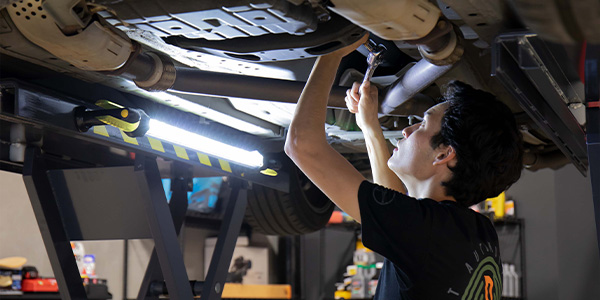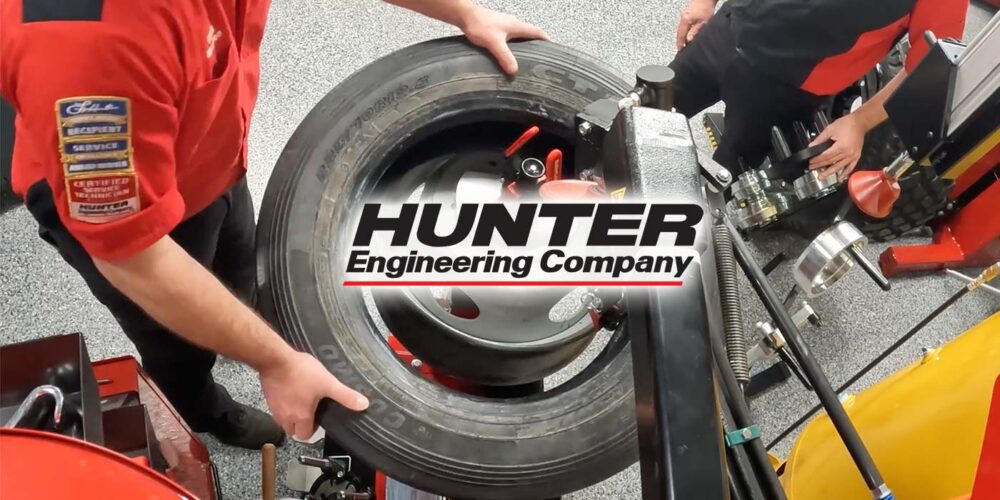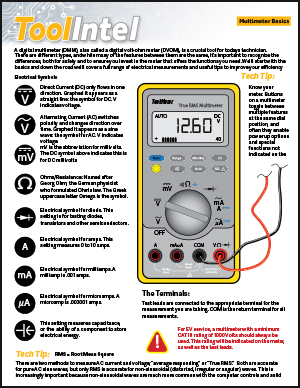By Larry Carley
Technical Editor
Though pistons can often be salvaged when rebuilding or remanufacturing an engine, sometimes they have to be replaced. The original pistons may have worn or damaged ring grooves, wrist pins or skirts, or they may have cracks. New pistons may also be necessary if the cylinders have too much taper wear and the block has to be bored to oversize. Or, maybe you just don’t want to reuse the original pistons if you’re building a performance engine or a high load engine like a diesel light-duty pickup truck.
Piston Failure
Pistons can fail any number of ways. The worst kind of failure is a catastrophic explosion that spews shrapnel inside the engine. A cast piston can shatter like a grenade if it hits a valve at high rpm, or if a solid object is sucked into the combustion chamber. The underlying cause may have been a broken timing chain or belt, (a prime example of the need for preventive maintenance) or the head of a valve may have snapped off because of fatigue failure (which can be caused by a lack of concentricity between the valve guide and seat), or a valve keeper breaks off the top of the valve stem or it pulls through the spring retainer.
If your customer is driving with a performance engine, a close encounter between a valve and piston may occur if the engine overrevs causing the valves to float, or if a valve spring breaks.
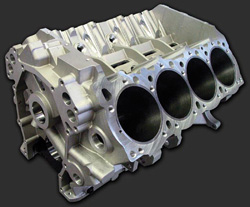 Knock-Knock
Knock-Knock
Burned and broken pistons are another problem you’ll often discover when the engine is torn down. The underlying cause here is often engine overheating, detonation (spark knock) and/or preignition. This includes problems that may be lurking in the vehicle’s cooling system, fuel delivery system, ignition system and emission controls.
Detonation can be caused by low octane fuel, over advanced spark timing, a defective or plugged EGR valve, a lean fuel mixture (dirty fuel injectors or a weak fuel pump), a buildup of carbon deposits in the combustion chamber, and engine overheating. Detonation can occur when fuel ignites spontaneously from excessive heat and pressure. The sudden increase in pressure can really hammer the pistons and rings causing them to break. Detonation also can damage the rod bearings and head gasket.
Preignition occurs when a hot spot inside the combustion chamber ignites the fuel before the spark plug fires. This also causes elevated pressures and temperatures that can sometimes burn a hole right through the top of a piston! Preignition is most often due to engine overheating and lean fuel mixtures, but can also result if the wrong heat range spark plugs (too hot) are used.
Replacing detonation- or preignition-damaged pistons in a customer’s engine may temporarily return the engine to service. But the new pistons will likely suffer the same fate as the old ones unless the conditions that were causing the problems are diagnosed and corrected.
Scuffing Along
Scuffing is another condition that can damage pistons. Scuffing is often the result of overheating, but loss of lubrication, detonation and preignition also can be contributing factors. When an engine runs hot, the pistons swell. This reduces the clearance between the piston and cylinder walls. The cylinder bore also can distort, adding to the problem. If the piston scuffs, it will wipe metal off the side of the piston.
Where the scuffing occurs will give you a clue as to what might have caused it. When overheating is involved, the scuffing will be primarily on the upper ring lands and on the sides near the wrist pins. There may also be oil carbon and lacquer burned onto the underside of the piston indicating it got too hot.
Scuff marks on the lower skirt area often indicates a lack of lubrication (check the oil pump and pickup screen). Scuff marks on the edges or corners of the thrust sides of the piston may be the result of bore distortion. Scuffing on both thrust sides would indicate binding in the wrist pin.
Normal wear also takes its toll on pistons. The constant pressure and reciprocating motion in the cylinder bore causes wear on the piston skirt as well as the wrist pin bosses and ring lands. Elevated temperatures and high loads cause microwelding between the rings and lands, resulting in rapid land wear.
Sometimes a wrist pin will work loose and chew into the cylinder with each stroke of the piston. The underlying cause here may have been improper installation of the retaining lock rings on a full floating wrist pin, improper fit or installation of a pressed-in wrist pin, a twisted or bent connecting rod, excessive thrust end play in the crankshaft or taper wear or misalignment in the crankshaft rod journal.
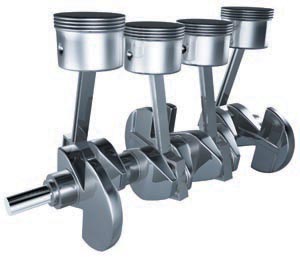 Piston Problems
Piston Problems
Piston slap is a classic symptom of too much clearance between the pistons and cylinder bores. Piston slap is most audible when a cold engine is first started because clearances are greatest then. This doesn’t necessarily mean the pistons are worn; some new engines will slap a bit when first started. But if the slap doesn’t go away as the engine warms up, it usually means the pistons and/or cylinders are worn. A compression test and/or leakdown test can be used to confirm the diagnosis.
A cracked piston or one with a hole in it will usually signal its presence with a plume of blue smoke in the exhaust. There will also be excessive blowby into the crankcase, which will be evident if the PCV valve is temporarily removed while the engine is idling. A power balance test, compression check or leakdown test can be used to isolate the problem to a specific cylinder.
When to Replace
Any pistons that are worn or damaged must be replaced. In most cases, if one piston is bad, the others are too so, all should be replaced as a complete set. Many pistons that appear to be in good condition and show no signs of scuffing may still have to be replaced because the upper ring lands are worn. If a piston with worn ring lands is reused, the rings won’t seal properly and the engine will use oil. Wear or looseness in the wrist pin area would also call for replacement.
Another reason to replace pistons would be to change the stock compression ratio (as when using different heads or aftermarket heads, or when building a performance motor) or to increase engine durability. Stock cast pistons are fine for everyday driving, but may lack the strength to handle higher than stock horsepower in a modified engine. Upgrading to hypereutectic pistons or forged pistons in such a case would probably be necessary.
The safest bet is to replace pistons with ones that are the same material as the original or better. Many late-model engines today are factory-equipped with hypereutectic pistons. Switching to cheaper cast pistons may be asking for trouble.
Hypereutectic pistons have a higher silicon content (typically 16-20% versus 8-11% for a standard piston), which makes them harder, more wear resistant and much stronger than ordinary cast alloys. Consequently, hypereutectic pistons are better able to resist ring pound out and scuffing. They also expand less than standard cast alloys, which allows them to be assembled with closer tolerances (helps reduce noise).
HP and Severe Duty
For high-performance, severe service or heavy-duty applications, hypereutectic or forged pistons are usually required. Forged pistons may contain from almost no silicon up to 11.5%, depending on the alloy and application. The important difference here is the way forged pistons are made: they are forged under high pressure rather than cast. The forging process increases the density of the metal and significantly improves its strength (up to 40% or more over conventional cast pistons). Forging also increases cracking resistance, and may allow a piston to survive a close encounter with a valve without shattering. Forged pistons generally run 18-20% cooler than cast pistons, too, which is a plus in high heat or performance applications. Because of these differences, forged pistons are usually the preferred choice for turbocharged, supercharged engines, and those running nitrous oxide.
Some people think that the same thermal characteristics that allow forged pistons to run cooler also causes them to swell more as they heat up. Consequently, there’s a common misconception that forged pistons always require greater skirt-to-wall clearances — a notion that is not necessarily true because clearances depend on the type of alloy that is used in a forged piston, the design of the piston itself the application in which the piston will be used. Some forged alloys actually have a lower coefficient of thermal expansion than the alloys commonly used in conventional cast pistons!
One way to control thermal expansion in a piston is to manufacture it so the piston is slightly elliptic rather than round. The diameter of most pistons (forged as well as cast) measures anywhere from 0.010” to 0.035” shorter across the wrist pin axis than the diameter perpendicular to the pin (the “major” axis). This compensates for the greater mass in the wrist pin area, which causes the piston to swell sideways as it heats up. This allows the piston to fill the hole as it heats up for a tighter all-round seal.
Handling the Heat
Piston growth is also influenced by the temperature differential between the top and bottom of the piston. The top can be 300° F or more hotter than the bottom. Since the top runs hotter and swells more than the bottom, growth can be controlled by making the skirt profile taper in toward the top. The typical piston is widest at the bottom of the skirt and narrowest at the top (which is why it is so important to always measure a piston at the location specified by the piston manufacturer, which may be either perpendicular to the pin at the pin centerline, 1” up from the bottom of the skirt or at the top of the skirt).
When all these factors are taken into consideration, there can be considerable differences in recommended minimum skirt clearances between various brands of forged pistons. In some applications (such as a low compression, moderate horsepower output engine), a forged piston may be installed with the same clearances as an OE cast piston. In other applications (high compression, high power output), the pistons may need additional clearance.
Whether the piston has a coated skirt (and the type of coating) will also affect the recommended clearance. Coatings are applied to prevent dry starts and scuffing, and to protect the piston and cylinders in case the engine loses lubrication. Most engines today have very tight piston-to-wall clearances (0.001” or less) to minimize blowby and reduce piston rock. With a coating, the clearance may be reduced even more, and some coated pistons may actually be installed with zero clearance!



